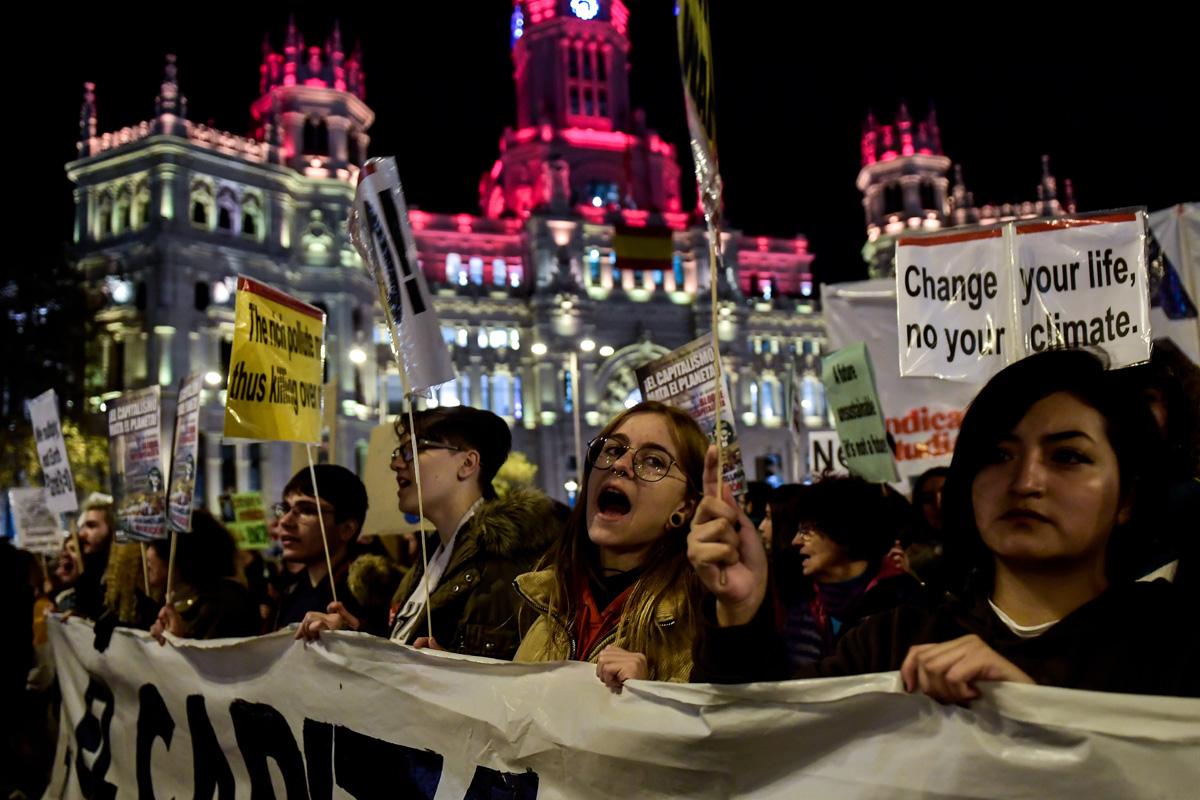Kenya secures funding to tackle climate change challenges
The United Nations (UN)-backed Green Climate Fund (GCF) has approved 50 million US dollars for key projects to bolster climate resilience and promote sustainable development in Kenya.
That will be a difficult task, if the trend of discussions at the two-weeklong Madrid conference is any indication.

Demonstrators walk past the city hall during a mass climate march to demand urgent action on the climate crisis from world leaders attending the COP25 summit, in Madrid, on December 6, 2019. The main march takes place in Madrid on the sidelines of the UN climate conference, with a simultaneous rally in the Chilean capital, which had been due to host the 12-day gathering but was forced to pull out due to deadly anti-government protests. (CRISTINA QUICLER / AFP)
The climate talks under the aegis of the United Nations, that began on a fairly reassuring note in Madrid a fornight ago, ended in a fizzle over the weekend. By that token, the upshot in Madrid has been no different than what it was in Cancun, Copenhagen and Paris over the past few years. It would be no exaggeration to aver that the comity of nations, both developed and developing, have extended the loop of failure. The fact that there has been limited progress on an emissions target ~ the bedrock of a cleaner and safer environment ~ points to the persistent lack of unanimity towards a consensus.
Few countries came to this year’s talks with updated plans to reach the objectives spelt out in Paris in 2015, though the European Union eventually agreed to its long-term target of reaching “net zero” emissions by 2050. It is a long haul, however noble the goalpost. It is fairly evident too that countries are generally loath to effect a paradigm shift, one that can alone bring about a dramatic change. The nub of the matter must be that more ambitious emissions cuts are needed globally if the Paris pledge to cap global heating to no more than 2 degrees C is to be met.
Advertisement
There was no indication last Saturday whether the signal of intent will be followed through, at any rate between now and the next round in Glasgow in November 2020. This year’s annual UN talks were reportedly riveted to narrow technical issues such as the working of the global carbon markets, a means by which countries can trade their successes in cutting emissions with other countries that have not cut their own emissions rapidly enough.
Advertisement
By Sunday afternoon, more than 40 hours after the deadline for the talks, an agreement on cutting emissions was still a long way away. The issue will have to be resolved next year. A “high ambition coalition”, so-called, comprising the EU and many smaller developing countries pressed for a resolution to ask all governments to formulate stronger national plans on cutting carbon. They are said to have partially succeeded, and they will now hope to exert political pressure ~ from within the talks, in behind-the-scenes meetings in world capitals, and from civil society ~ on all governments to recommit themselves to the 2015 Paris accord when they assemble at the high table in 2020 with updates on their national climate plans.
That will be a difficult task, if the trend of discussions at the two-weeklong Madrid conference is any indication. No major breakthrough had been seriously expected at this year’s meeting, known as COP25, but observers had at least hoped to see a spirit of cooperation and a willingness to press ahead with the Paris agreement’s goal of holding temperature rises. Both have turned out to be ever so elusive. Poor countries were restive over what they called “intransigence on the part of some richer nations”.
Advertisement